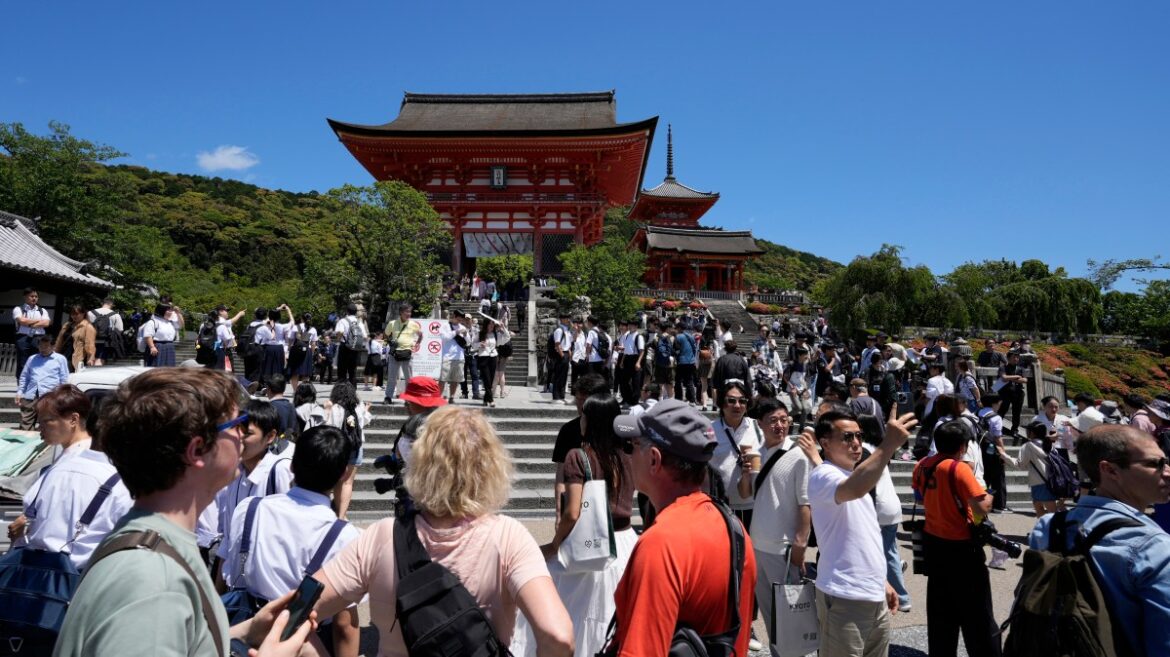Travellers visiting the ancient Japanese capital of Kyoto will face a tenfold increase in accommodation tax, in the latest pushback against overtourism in Japan.
Visitors paying 100,000 yen (£489) or more per night will face a levy of up to 10,000 yen (£48.92), an increase from 1,000 yen (£4.89) introduced in 2018 and the highest fee of its kind in the country.
“Tourists also must bear the cost of countermeasures against overtourism,” Kyoto travel authorities said in a government application to hike the fees in March.

The city has tried banning visitors from parts of Gion
FRANCK ROBICHON/EPA
Most fees for lower-cost accommodation in Kyoto will also go up, either doubling or quadrupling. The levy for hotels charging between 6,000 yen (£29.35) and 19,999 yen (£97.84) will go from 200 yen (£0.98) to 400 yen (£1.96), and stays costing 20,000 yen (£97.84) to 49,999 yen (£244.60) will see fees rise from 500 yen (£2.45) to 1,000 yen (£4.89).
The increases come as a rash of luxury hotels open in Kyoto, including the Imperial Hotel, which is slated to launch next year in Gion, a neighbourhood dotted with old-world teahouses renowned for their geisha culture.
Scenes of Instagram-mad tourists stalking geisha paparazzi-style, thronging narrow lanes around historic Buddhist temples and crowding locals out of city buses have scandalised the community.
The city has tried banning visitors from parts of Gion and imposing fines of up to 10,000 yen for non-consensual photography. These have mostly failed to curb bad behaviour by visitors and influencers, according to Japanese media.

Geisha have attracted a lot of unwanted attention from tourists looking for a good picture
GETTY
Other municipalities have introduced tourist caps and higher fees to prevent overcrowding on Mount Fuji, and tiered pricing for tourists at Niseko ski resort in Hokkaido, Himeji Castle and various attractions including Buddhist temples. Elsewhere, local authorities have hired security guards and erected barriers to control crowds around manga and anime sites that have gone viral on social media.
After a record-breaking 35 million visitors in 2024, Japan saw a new high of 21.51 million tourists arriving in the first half of this year, a jump of 21 per cent from the same period a year earlier, the Japan National Tourism Organisation said in July.
The numbers for July and August this year also shattered records. Most of these visitors stick to the “Golden Route” of Tokyo, Kyoto and Osaka, with less than 2 per cent journeying to the region of Tohoku in northern Japan.


AloJapan.com